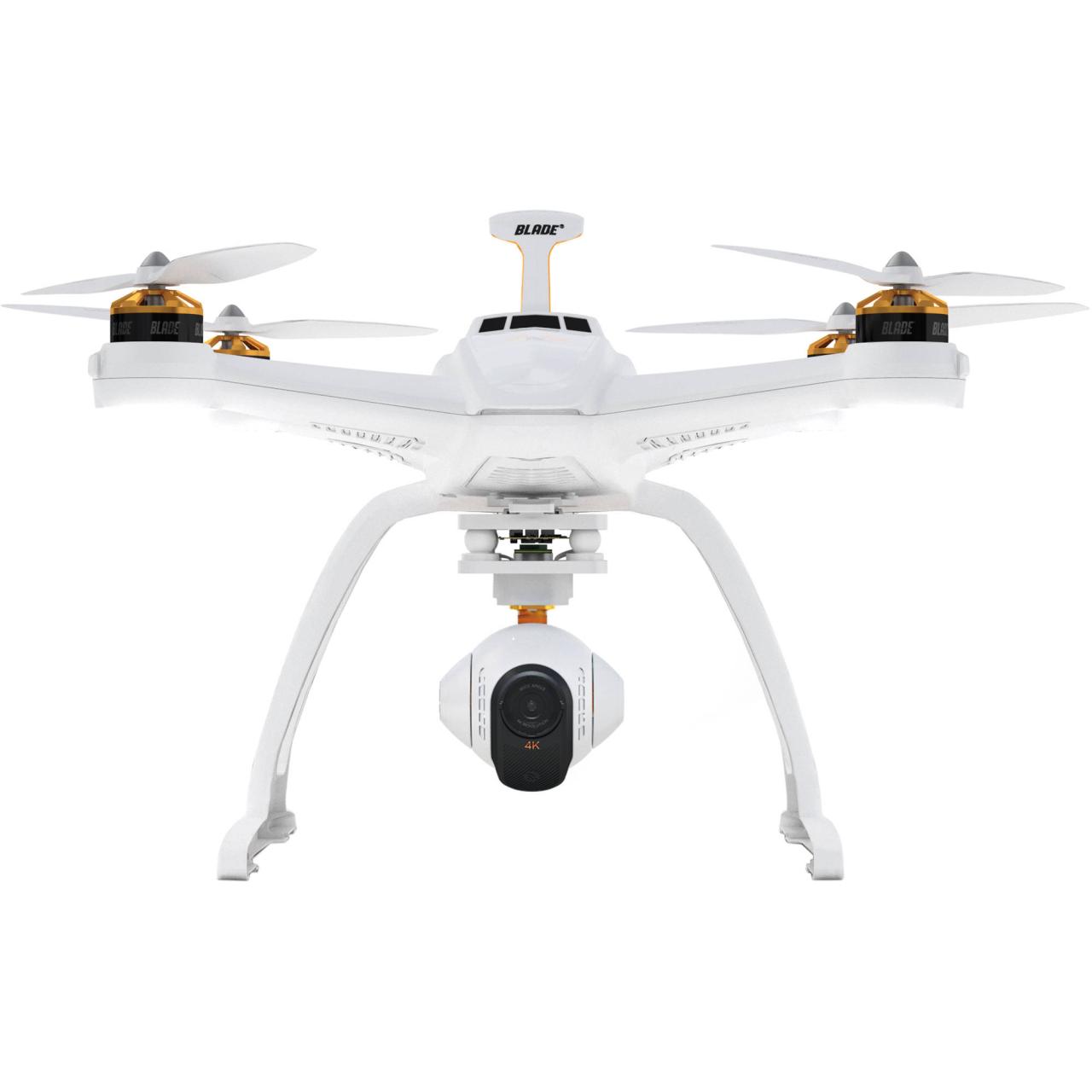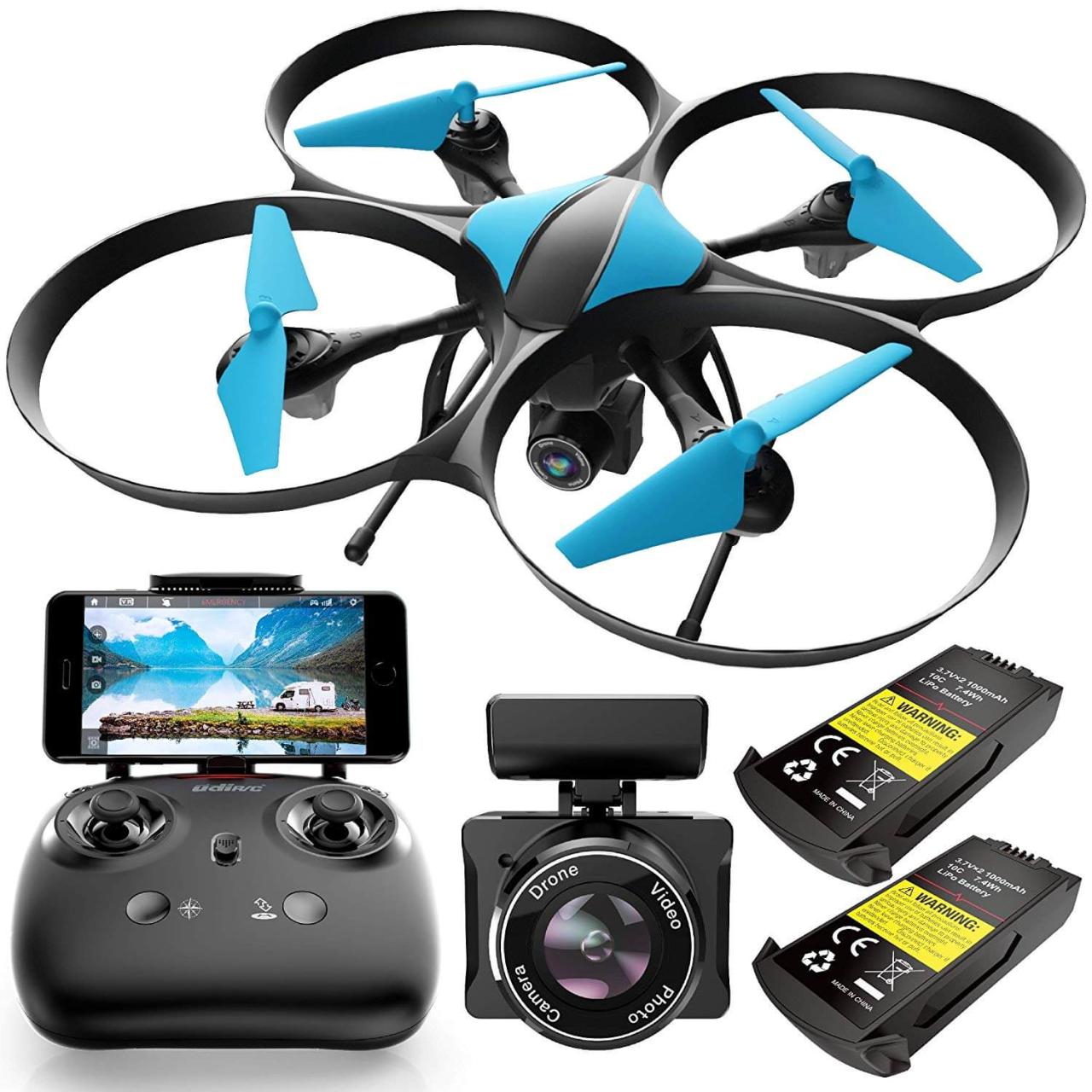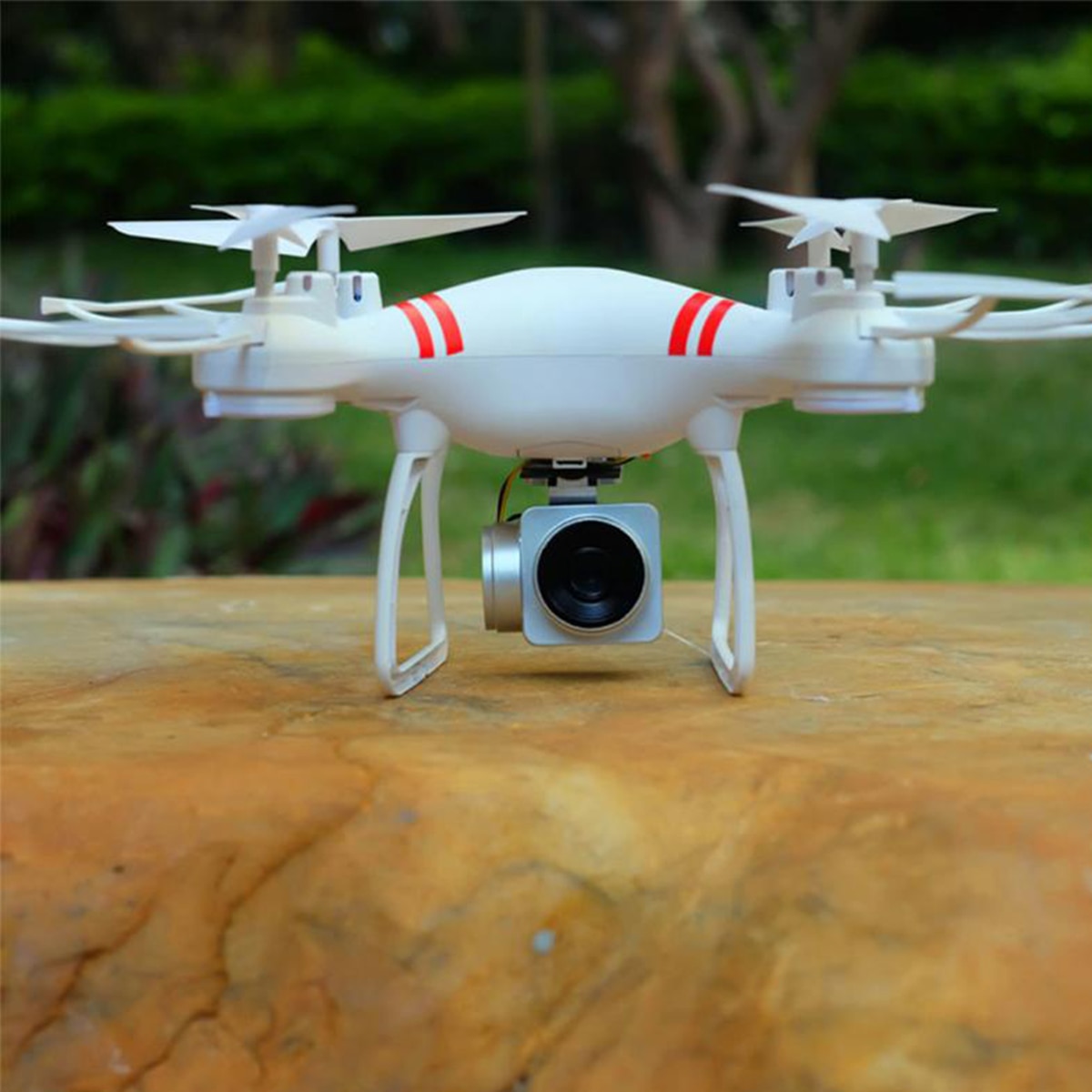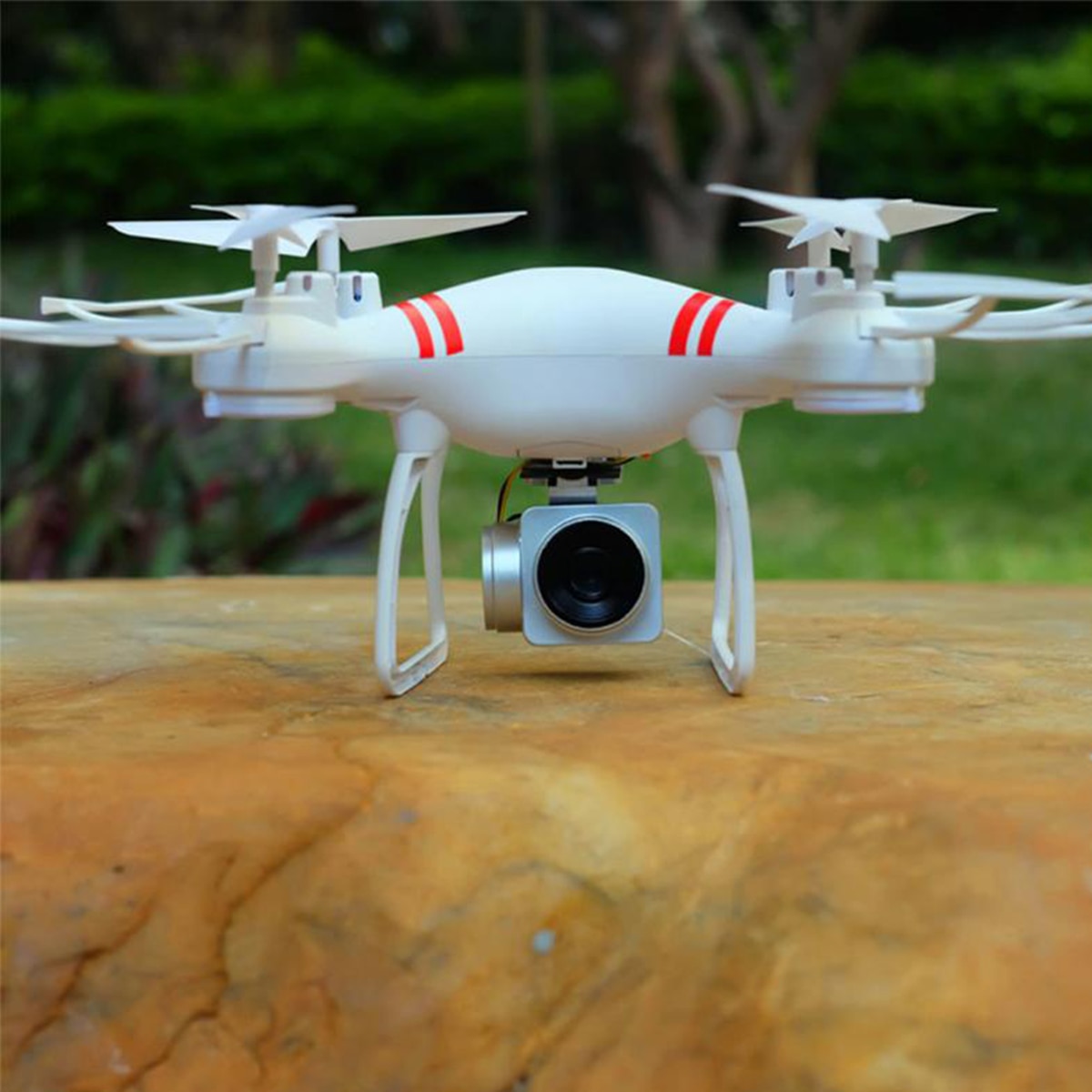Drone with camera technology has revolutionized various sectors, from professional filmmaking to agricultural monitoring. This guide delves into the diverse world of drones equipped with cameras, exploring their types, capabilities, applications, and the crucial safety and legal considerations surrounding their operation. We will examine different drone sizes, camera technologies, and image capture techniques, providing a comprehensive overview for both hobbyists and professionals.
From understanding the nuances of camera sensors and stabilization systems to mastering flight techniques and post-processing workflows, this guide equips readers with the knowledge necessary to harness the full potential of drone-based aerial imaging. We’ll also navigate the legal landscape, ensuring responsible and compliant use of this powerful technology.
Drone Types and Camera Capabilities

The world of drone cameras is incredibly diverse, offering a range of options for both professional and hobbyist users. Understanding the different types of drones, their camera technologies, and their applications is crucial for making an informed purchase and utilizing them effectively. This section explores the various categories of drones with cameras, focusing on their specifications, capabilities, and intended uses.
Drone Categories and Specifications
Drones with cameras are categorized by size, features, and intended use. The table below provides a summary of these categories, along with examples of popular models within each.
| Type | Size | Features | Intended Use |
|---|---|---|---|
| Nano Drone | Extremely small, palm-sized | Basic camera, limited flight time, often lacks GPS or obstacle avoidance | Hobbyist, casual aerial photography |
| Micro Drone | Small, easily portable | Improved camera, longer flight time than nano drones, may include basic GPS | Hobbyist, beginner aerial photography and videography |
| Mini Drone | Compact and lightweight | Better camera quality (often 1080p), GPS, obstacle avoidance, longer flight time | Consumer, hobbyist, entry-level professional use |
| Standard Drone | Mid-sized, versatile | High-quality camera (4K or higher), advanced GPS, obstacle avoidance, long flight time, potentially foldable design | Consumer, professional photography and videography, inspection |
| Large Drone | Larger, heavier payload capacity | High-resolution cameras, advanced features (thermal imaging, RTK GPS), extended flight time, heavy-duty construction | Professional applications (mapping, surveying, agriculture) |
Examples of popular models within each category would vary depending on the current market, but generally include well-known brands such as DJI, Autel, and Parrot. Each brand offers several models within each size category, differing in specific features and pricing.
Camera Sensor Types and Image Stabilization
The quality of images and videos captured by a drone camera depends heavily on the sensor type and image stabilization technology employed. CMOS (Complementary Metal-Oxide-Semiconductor) and CCD (Charge-Coupled Device) are the two primary sensor types used. CMOS sensors are more common in drones due to their lower power consumption and smaller size. Image stabilization is crucial for smooth, professional-looking footage.
Electronic Image Stabilization (EIS) is a digital method, while mechanical gimbal stabilization uses a physical mechanism to counteract vibrations.
Drones equipped with cameras offer incredible versatility for aerial photography and videography. For high-quality, fixed-location imagery, however, you might consider a dedicated system like the ones showcased at the port dover camera exhibit. This provides a valuable alternative to relying solely on drone footage, particularly for situations requiring precise, static shots. Ultimately, the best approach often involves combining the mobility of a drone with camera with the stable perspective of a high-resolution ground-based system.
| Camera Lens Type | Pros | Cons |
|---|---|---|
| Wide-Angle | Captures a broad field of view, ideal for landscapes and large areas. | Can distort images at the edges, especially with extreme wide angles. |
| Telephoto | Allows for capturing distant subjects with greater detail. | Narrower field of view, requires more stable platform for sharp images. |
| Zoom | Offers versatility, allowing for both wide and close-up shots. | Image quality may degrade at maximum zoom, potentially slower autofocus. |
Drone Camera Applications

Drones equipped with cameras have revolutionized several industries, offering unique perspectives and capabilities. The versatility of drone technology has led to its widespread adoption across diverse professional fields.
- Aerial Photography and Videography: Drones provide stunning aerial perspectives for capturing breathtaking landscapes, architectural marvels, and events. High-resolution cameras and advanced flight capabilities allow for creative and dynamic shots.
- Real Estate: Drone photography and videography provide captivating property visuals, showcasing homes and surrounding areas from unique angles. Virtual tours and high-quality marketing materials can be created easily.
- Agriculture: Precision agriculture benefits greatly from drone technology. Drones equipped with multispectral or thermal cameras can monitor crop health, identify areas needing attention, and optimize resource allocation.
- Search and Rescue: Drones are valuable tools in search and rescue operations. Their aerial vantage point allows for quicker location of missing persons or assessing disaster zones.
- Infrastructure Inspection: Drones can inspect bridges, power lines, and other infrastructure safely and efficiently, identifying potential problems before they become major issues.
Legal and Ethical Considerations
- Privacy concerns: Respecting individuals’ privacy is paramount. Always adhere to local laws and regulations regarding data collection and usage.
- Airspace regulations: Understand and comply with all airspace regulations in your operating area. Obtain necessary permits and licenses.
- Safety protocols: Prioritize safety during drone operations. Follow manufacturer guidelines and best practices to avoid accidents.
- Data security: Protect collected data from unauthorized access and misuse. Implement appropriate security measures.
- Liability and insurance: Consider potential liabilities and obtain appropriate insurance coverage for drone operations, especially for commercial use.
Drone Flight and Image Capture Techniques

Achieving high-quality aerial images and videos requires careful planning and execution. Optimal flight techniques involve considering several factors to ensure the best results.
Optimal Flight Techniques: Lighting conditions significantly impact image quality. Avoid harsh shadows by scheduling flights during the golden hours (sunrise and sunset). Maintain a stable altitude to minimize image blurring. Wind conditions affect flight stability; avoid strong winds.
Step-by-Step Guide for a Drone Flight Mission (Panoramic Landscape Photography):
Drones with cameras offer incredible versatility, from aerial photography to industrial inspection. Companies like archer aviation , while focused on eVTOL aircraft, highlight the evolving technological landscape impacting even smaller aerial systems. This rapid advancement continues to improve the capabilities and affordability of drones with cameras, opening up new possibilities for both professionals and hobbyists.
- Plan the flight path: Identify key landmarks and desired viewpoints.
- Check weather conditions: Ensure suitable wind and light conditions.
- Pre-flight checks: Inspect the drone and camera for any issues.
- Obtain necessary permissions: Check for any flight restrictions in the area.
- Execute the flight: Capture overlapping images for seamless stitching.
- Post-processing: Stitch the images together using photogrammetry software.
Post-Processing Drone Footage: Post-processing enhances the quality of drone footage. Editing software allows for trimming, adding transitions, and enhancing visual appeal. Color correction ensures consistent and accurate colors. Stabilization tools minimize camera shake and vibrations, resulting in smoother footage.
Safety and Regulations, Drone with camera
Safe and responsible drone operation is crucial. Understanding and adhering to safety precautions and regulations ensures the safety of both the operator and the surrounding environment. This section highlights essential safety measures and legal requirements.
Essential Safety Precautions: Pre-flight checks are essential before each flight. Inspect the drone, batteries, and camera for any damage or malfunction. Familiarize yourself with emergency procedures in case of unexpected events, such as loss of signal or battery failure. Maintain airspace awareness, avoiding restricted areas and populated zones.
Regulations and Laws: Drone regulations vary by location. Research and comply with all local, national, and international laws pertaining to drone operation. Register your drone with the relevant authorities if required. For commercial use, obtaining the necessary permits and licenses is mandatory.
Importance of Permits and Licenses: Operating a drone commercially without the required permits and licenses is illegal and can result in significant penalties. Permits ensure compliance with safety standards and regulations, protecting both the operator and the public.
The integration of cameras into drone technology has unlocked unprecedented possibilities across numerous fields. This guide has explored the diverse applications, technological advancements, and essential safety protocols associated with drone cameras. By understanding the various types of drones, camera technologies, and operational considerations, individuals and organizations can effectively leverage this transformative technology while adhering to safety regulations and ethical guidelines.
The future of drone technology promises even greater innovation and integration into our daily lives.
Question Bank: Drone With Camera
How long does a drone battery typically last?
Drone battery life varies greatly depending on the drone model, battery size, and flight conditions (wind, temperature). Expect anywhere from 15 to 45 minutes of flight time per charge.
What is the range of a typical drone?
The range also varies significantly depending on the drone and interference. Many consumer drones have a range of a few kilometers, while professional models can reach further, though regulatory limits often restrict operational distance.
How do I legally fly a drone?
Drone regulations differ by location. You’ll need to check with your local aviation authority for specific rules and may need to register your drone and obtain permits for commercial use.
What software is good for editing drone footage?
Popular options for editing drone footage include Adobe Premiere Pro, DaVinci Resolve, and Final Cut Pro. Many free and paid options are available, each with its own set of features and capabilities.
